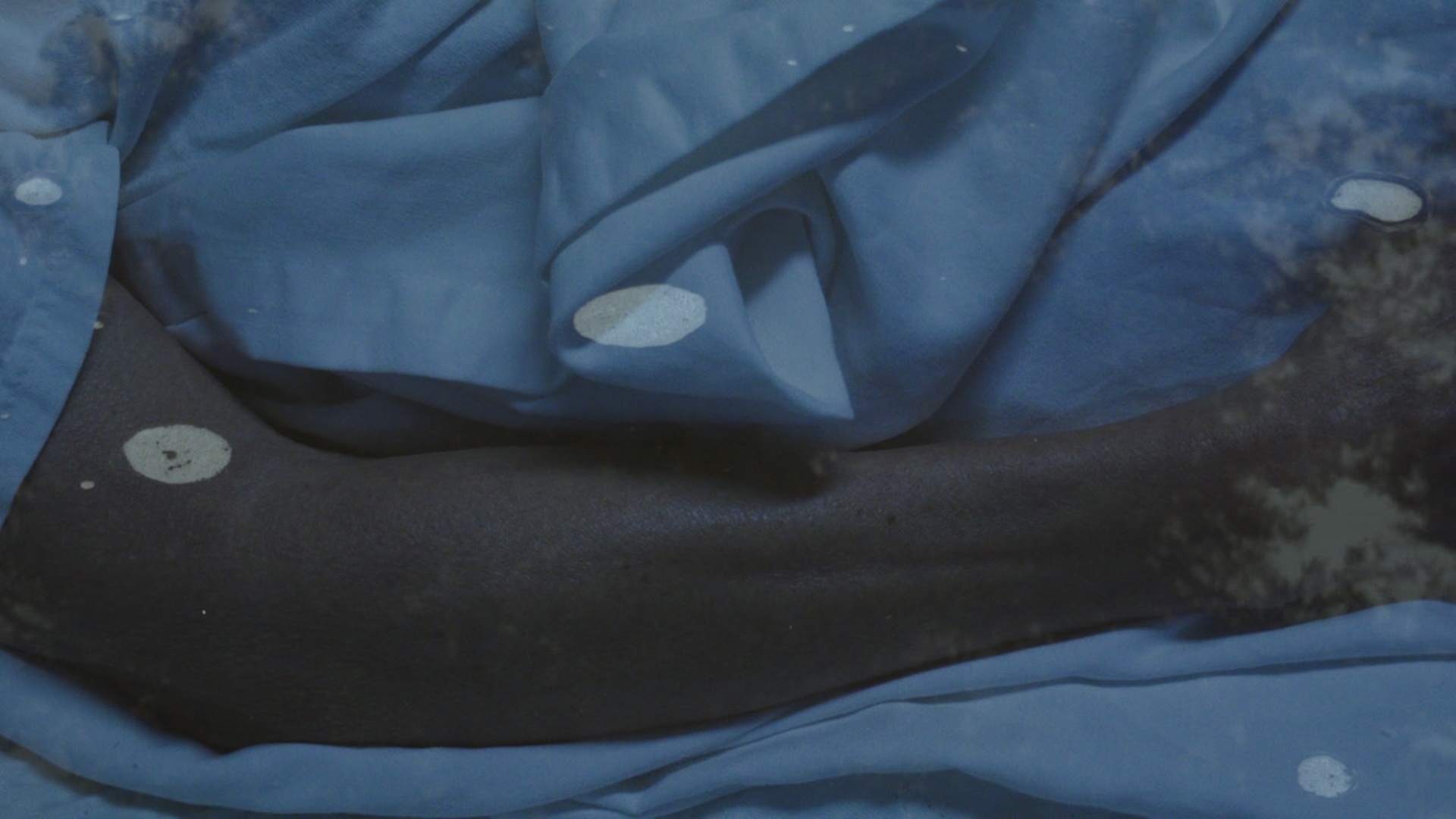
In Nowhere Near (2023, screened in YIDFF 2023’s “New Asian Currents” program), director Miko Revereza gives his audience what he was not afforded living as an undocumented immigrant in the United States: access. Through his intimate self-narration, use of footnotes, handheld camerawork, and even improvised clarinet soundscapes, Revereza bares his soul in pursuit of piecing together his family history against the backdrop of colonization and migration. As a result, you travel throughout time and space in Revereza’s lens, from his Lola and Lolo’s cramped apartment in Los Angeles, to the liminal Mall of America in Minneapolis, to the 9/11 memorial in New York City, to the coast of Pangasinan, his family’s ancestral land in the Philippines. Revereza’s intentional and raw storytelling guides us through the frustrating experience of uncovering fragmented family history while searching for home. As a mixed-race Asian American and child of an immigrant, this film resonated with me deeply as I recalled my experiences growing up in the South and feeling othered in spaces I struggle to call home.
Revereza manages to translate difficult emotions to screen using superimposed images against layered diegetic audio, creating powerful visual poetry. Tiny foam circles in the LA River overlap a smattering of freckles on his Lola’s arm; palm trees in the Philippines overlay a cartoonish playground character in a vast, mostly-empty mall in Minneapolis. As opposed to real-time documentation when Revereza is in motion, these images linger over each other as if they are slowly moving photographs, evoking the feeling of being in two worlds at once. Revereza often uses these meditative scenes to illustrate his family’s experience living as immigrants in the U.S. post-9/11. There is a phone call from a relative urging him to apply for renewal of his DACA application in hopes it will lead to citizenship. Disjointed saxophone and clarinet play over worn streetscapes, and we feel the weight of navigating a world already under duress of bureaucracies and broken systems. Although I am generally aware of the political atmosphere in my country, I felt like I was witnessing a different U.S. than the one I experienced in the South — I began to better understand the nuances of Revereza’s positionality documenting his personal relationship with land, freedom, and home.
In contrast to the chaos and almost oppressive confusion that takes place in the U.S. portion of the film, the second half of the film takes on a more observational, reflective tone when Revereza travels back to the Philippines with his family. He records his Lola moving from place to place lamenting the ways the land has changed from her memory – mango groves cut down in favor of highways, cathedrals damaged by bombings during WWII. The soundscape reflects the tonal shift: ambient, droning audio pairs with undercurrents of ocean noises as we see congested traffic in Manila and peaceful beaches in Pangasinan. We are then forced to confront the realities of the war as we watch archival footage that contextualizes the events that catalyzed his family’s movement. It is a sobering moment in the film that leads both Revereza and his audience towards quiet contemplation. Ultimately, Nowhere Near does not warrant a conclusive end because colonialization’s extractive, irreversible legacy does not allow it. However, it feels like an emotional catharsis to see the object of Revereza’s search play out in real time as he documents his family’s return to the Philippines. In the final montage of layered images familiar to many Asian immigrant families, I felt a lingering feeling of gratitude for Revereza’s intimate storytelling that left a lasting impression on my own understanding of home.
Hope Davison
![ドキュ山ライブ! [DOCU-YAMA LIVE!]](http://www.yidff-live.info/wp-content/themes/yidff-live_2017/images/header_sp_logo1.png)

